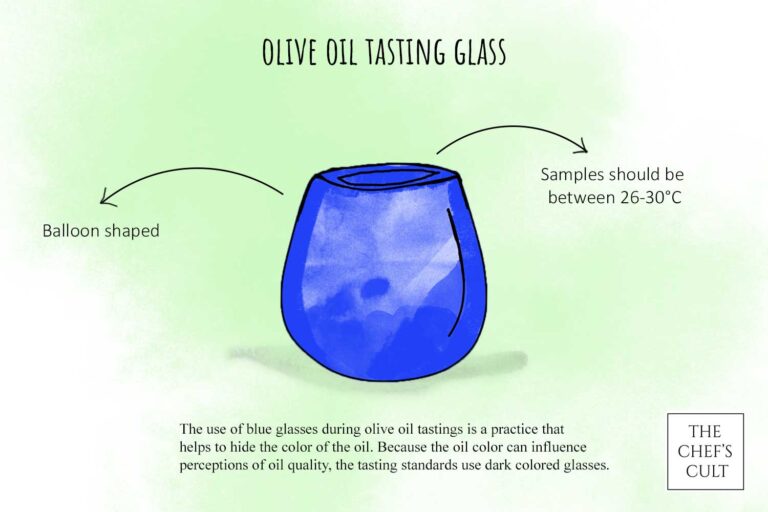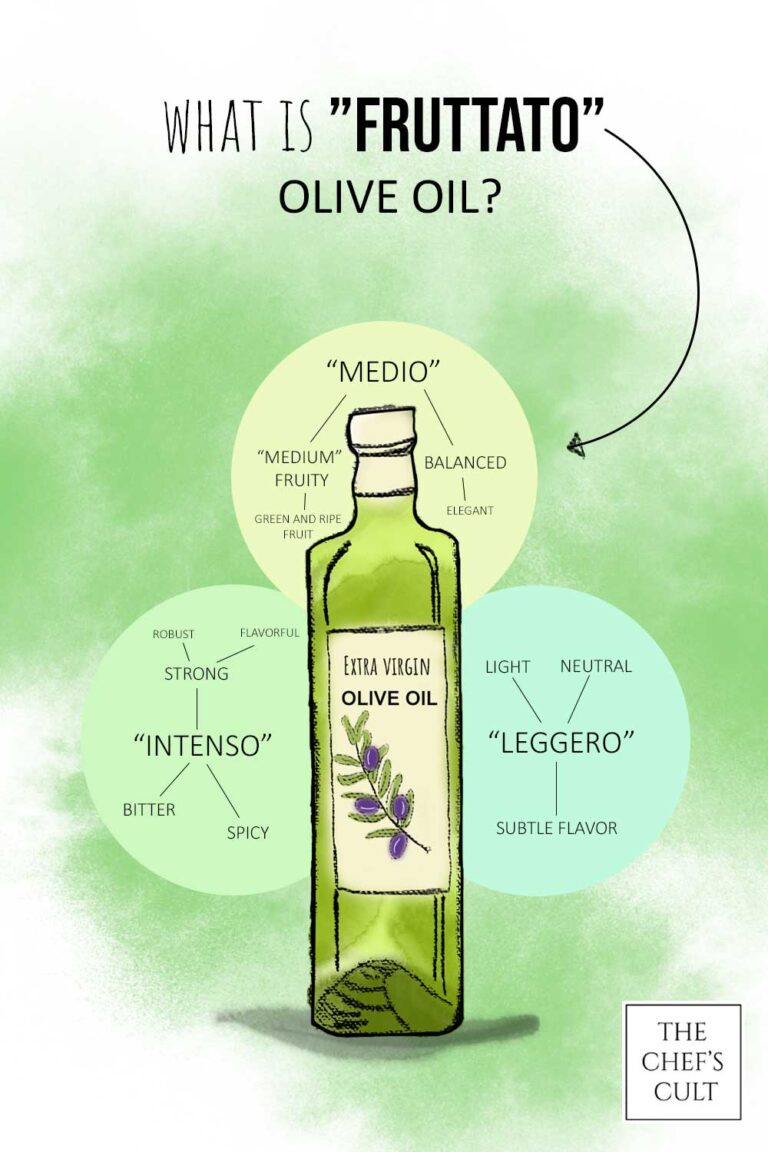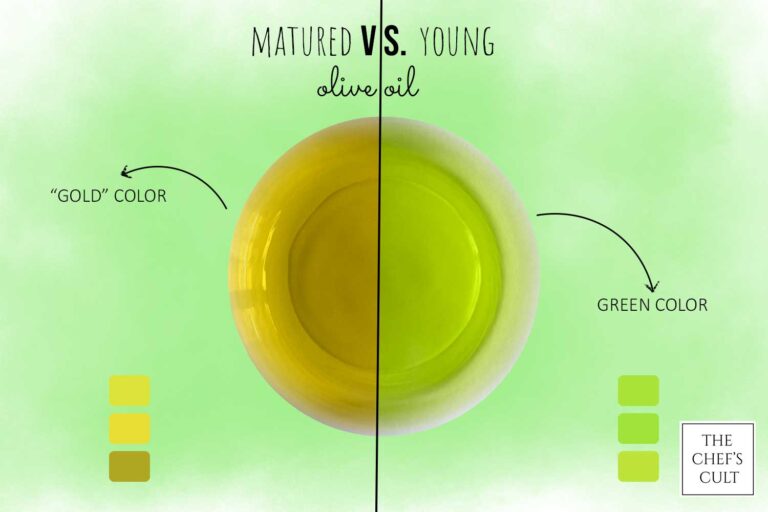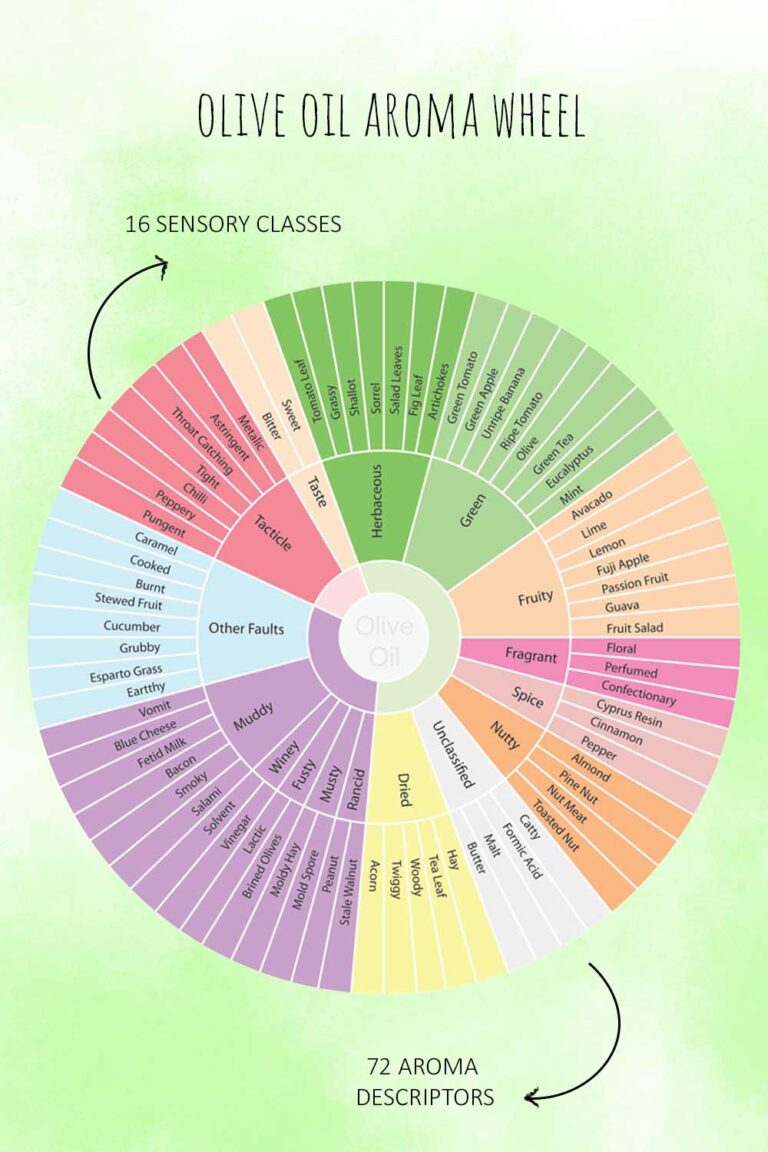Hello my little olives and welcome to the aromatic wonderland of olive oil, where sniffing isn’t just for allergies, it’s a sophisticated art form! Picture yourself in a room filled with tiny blue glasses, like a secret club for olfactory enthusiasts. Forget the usual suspects of lavender-scented candles; here, we’re decoding the fragrance of liquid gold—olive oil. It’s a journey where we go beyond the basic “smells good” and dive into the subtle world of olives, where fruity and grassy notes mingle like a Mediterranean garden party. So, grab your nose, dust off your sniffing skills, and let’s embark on an adventure where the nose knows, and olive oil is more than just a slick character in the kitchen—it’s a perfumed legend!
The basics of olive oil tasting!
Olive oil is often tasted in blue glasses for sensory evaluation purposes. The use of blue or dark-colored glasses during olive oil tastings is a practice that helps to conceal the color of the oil. This is important because the color of the oil can influence perceptions, and tasters should focus primarily on aroma and flavor without being swayed by the oil’s appearance.
Olive oil comes in a variety of shades, ranging from golden yellow to deep green, and the color can be influenced by factors such as the olive varieties used, the ripeness of the olives, and the processing methods. However, color alone doesn’t necessarily correlate with the quality or taste of the oil. By using dark-colored glasses, tasters can make more objective assessments based on the oil’s aroma, taste, and mouthfeel without being influenced by its visual appearance.
This practice is similar to wine tastings, where wines are often evaluated in opaque glasses to prevent bias based on color. The goal is to create a more standardized and controlled environment for sensory analysis, allowing tasters to focus on the intrinsic qualities of the olive oil.

The 10 most important rules of olive oil tasting!
Evaluating the aroma of olive oil is an important aspect of olive oil tasting, often referred to as “olive oil sensory analysis” or “organoleptic assessment.” Here are some steps to help you appreciate and identify the aroma of olive oil:
1. Use a Proper Container:
Pour a small amount of olive oil (about 1-2 tablespoons) into a glass or small cup with a lid. The container should have a narrow opening to help concentrate the aroma.
2. Warm the Oil:
Cup the container in your hands and swirl it gently to slightly warm the oil. Warming the oil can enhance its aroma.
3. Sniffing Technique:
Place the opening of the container close to your nose without actually touching it. Take a few quick sniffs to capture the initial, more volatile aromas.
4. Identify Aromas:
Pay attention to the various aromas present. Olive oil can have a wide range of aromas, including fruity, grassy, herbal, floral, nutty, or spicy notes. Try to identify specific scents that come to mind.
5. Consider Intensity:
Assess the intensity of the aroma. Is it mild, moderate, or intense? A high-quality extra virgin olive oil often has a pronounced and complex aroma.
6. Evaluate Freshness:
Freshness is a crucial factor. A good olive oil should have a clean, fresh aroma, free from any off or rancid smells.
7. Taste the Oil:
To fully appreciate the olive oil, taste it as well. The taste will complement the aroma, and you may notice additional characteristics such as bitterness, pungency, and pepperiness.
8. Repeat the Process:
If you’re evaluating multiple olive oils, rinse your palate with water or a neutral palate cleanser between samples to avoid cross-contamination.
9. Record Your Observations:
Take notes on what you observe. Describe the intensity, specific aromas, and any other characteristics you notice. This can help you compare different oils and remember your preferences.
10. Practice and Learn:
Sensory analysis, including evaluating aroma, is a skill that can be developed with practice. Attend olive oil tastings, read about different olive oil varieties, and continue refining your palate.
Remember that the aroma of olive oil is influenced by factors such as the olive variety, growing conditions, harvesting methods, and the extraction process. The more you practice, the better you’ll become at discerning the nuances in olive oil aromas.
What does the term “fruttato” mean?
“Fruttato” is an Italian term commonly used to describe the fruity aroma and flavor of certain olive oils. In the context of olive oil, fruttato refers to the characteristic fruitiness that can be detected in the oil. This fruitiness is a positive attribute and is often associated with high-quality extra virgin olive oils.
The term encompasses a range of fruity notes, which can include the scents and flavors of fresh, ripe olives, as well as other fruits such as green apples, tomatoes, and herbs. The intensity of the fruttato aroma can vary, with some oils having a mild fruitiness and others being more robust and pronounced.
When evaluating olive oils, experts and enthusiasts often consider the fruttato character along with other factors such as bitterness and pungency. Fruttato olive oils are typically sought after for their complexity and depth of flavor, making them suitable for a variety of culinary applications. It’s important to note that the fruttato attribute is most associated with high-quality extra virgin olive oils, as lower-quality oils may lack this distinctive and desirable fruitiness.
What is “fruttato leggero” olive oil?
“Fruttato leggero” is an Italian term used to describe a light or mild level of fruitiness in olive oil. In the context of olive oil classification, fruttato leggero indicates a low to medium level of fruity aroma and flavor. This classification is often associated with extra virgin olive oils (EVOO), which are considered to be of the highest quality.
Olive oils with a fruttato leggero profile are characterized by a subtle and delicate fruitiness. The aroma and flavor notes may include mild hints of ripe or green olives, but they are not as pronounced as in oils with a more intense fruitiness. This makes fruttato leggero olive oil a good choice for those who prefer a lighter and more neutral taste, suitable for a variety of culinary applications without overpowering other flavors.

What is “fruttato medio” olive oil?
“Fruttato medio” is an Italian term used to describe a medium level of fruitiness in olive oil. In the context of olive oil classification, fruttato medio indicates a moderate or medium level of fruity aroma and flavor. This classification is often associated with extra virgin olive oils (EVOO), which are considered to be of the highest quality.
Olive oils with a fruttato medio profile typically exhibit a balanced and nuanced fruitiness that falls in the middle range of intensity. The fruitiness may include a mix of green and ripe fruit notes, such as green apple, almond, and possibly a hint of herbs. The goal is to achieve a harmonious combination of flavors that appeals to a wide range of palates.
When selecting olive oils, the fruttato medio category can be a good choice for those who enjoy a balanced and versatile oil that can complement various dishes without being overly mild or robust. It’s worth noting that the specific aroma and flavor characteristics can vary based on the olive varieties used, the region of production, and the harvesting and production methods.
What is “fruttato intenso” olive oil?
„Fruttato intenso” is an Italian term used to describe an intense or robust level of fruitiness in olive oil. In the context of olive oil classification, fruttato intenso indicates a high level of fruity aroma and flavor.
Olive oils with a fruttato intenso profile are characterized by a strong and pronounced fruitiness. The aroma and flavor notes can be bold, but they are always marked by bitter and spicy notes. There may be additional complexity with hints of herbs, green grass, or other intense flavors like artichoke or tomato leaf. Fruttato intenso olive oil is often sought after by those who appreciate a robust and flavorful oil that can stand out in dishes and contribute a distinctive taste. Think of it as the terminator among olive oils, pure muscle in every drop!

How does ripe olive oil taste like?
The aroma of ripe olive oil can be rich, fruity, and complex. When olives are harvested at the peak of ripeness, the resulting oil often carries distinct notes that reflect the maturity of the fruit. Ripe olive oil might have a sweet and mellow aroma, with hints of ripe fruits like tomatoes, apples, or even a touch of tropical fruits. There could also be a buttery quality to the scent.
Additionally, ripe olive oil might exhibit less bitterness and pungency compared to oils made from less ripe olives.
How does young olive oil taste like?
The aroma of young olive oil is typically characterized by vibrant, fresh, and green notes. When olives are harvested early in the season, the resulting oil tends to have a lively and robust fragrance that reflects the youthful vitality of the fruit. Common aromatic characteristics of young olive oil include:
Grassy Notes: Young olive oil often has a distinct grassy aroma, reminiscent of freshly cut grass. This is particularly true when the olives are harvested when they are still green.
Green Fruits: The aroma may include the scent of green fruits, such as green apples or unripe tomatoes. This imparts a crisp and slightly tart quality to the oil.
Herbaceous Undertones: Some young olive oils exhibit herbaceous notes, with hints of herbs like basil, mint, or arugula contributing to the overall aromatic profile.
Artichoke or Green Almond: There might be subtle undertones of artichoke or green almond, adding to the complexity of the aroma.
Peppery Finish: In addition to the fruity and herbal notes, young olive oils can sometimes have a peppery or spicy finish, especially if they are high in polyphenols.
And as you savor the lingering echoes of olive oil aromas, remember, in the world of culinary classics, olive oil is the Don Corleone of flavors—whispering its essence in every dish like a culinary consigliere. So, next time you drizzle that liquid gold, consider it a delicious offer you can’t refuse. May your kitchen be forever graced with the presence of the Olive Oil Godfather, ensuring your meals are as memorable as a Marlon Brando monologue. Bon appétit, and may your taste buds always be kissed by the olive oil mafia!



